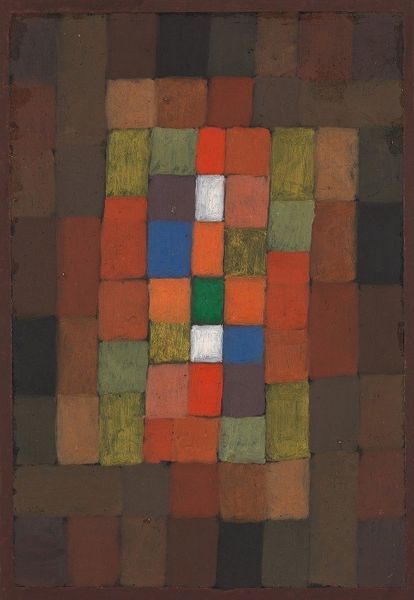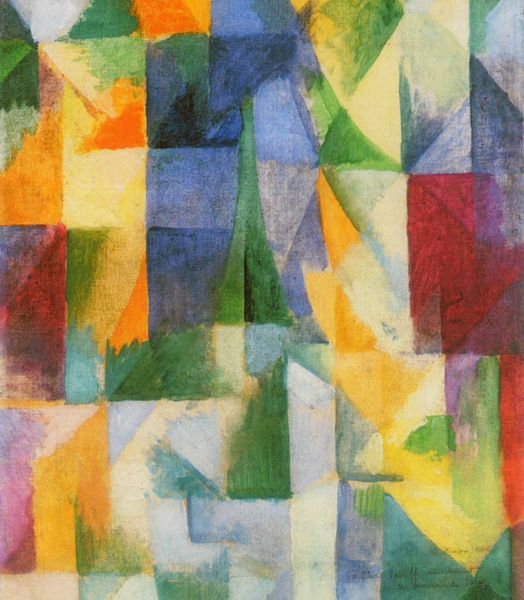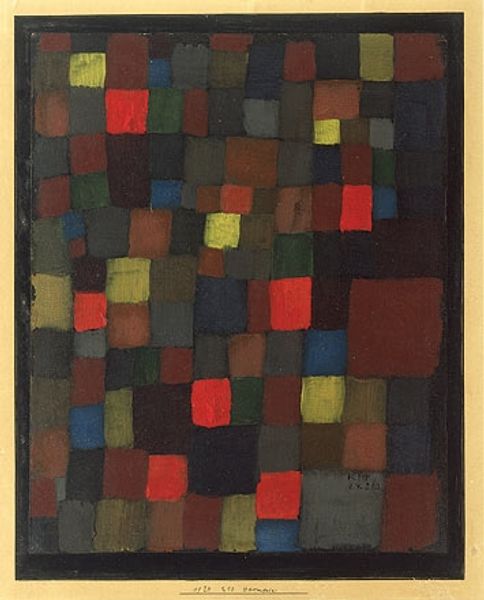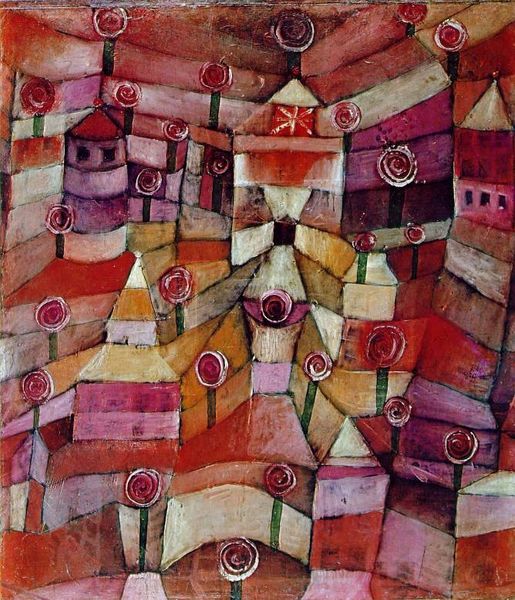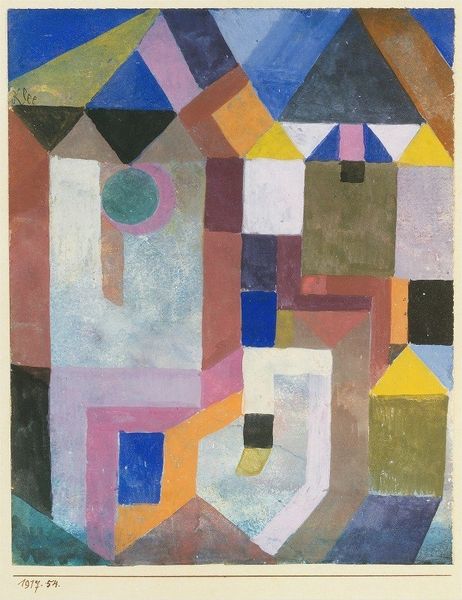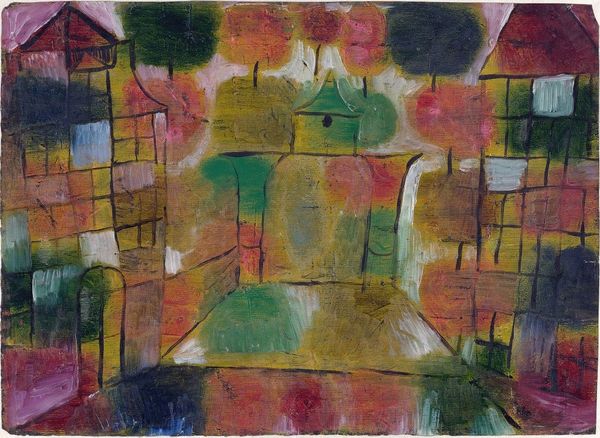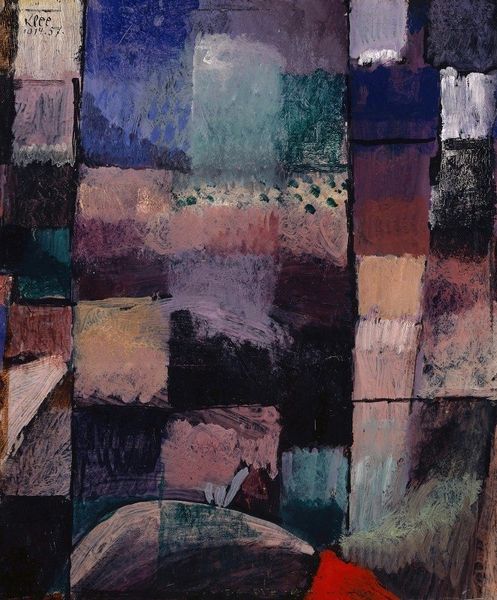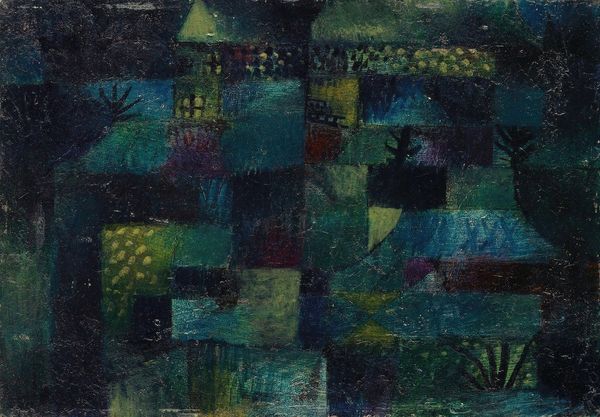
#
abstract expressionism
#
abstract painting
#
impressionist landscape
#
abstract
#
fluid art
#
neo expressionist
#
acrylic on canvas
#
paint stroke
#
painting art
#
impressionist inspired
#
expressionist
Copyright: Public Domain: Artvee
Editor: So, here we have Paul Klee’s “Redgreen and Violet-Yellow Rhythms” from 1920. It’s a striking piece—the blocks of colour remind me a bit of stained glass, but also maybe a cityscape viewed through a kaleidoscope? I’m immediately curious about those little trees dotted around. What do you see in this piece, beyond the obvious rhythmic play of colours? Curator: It’s funny you say stained glass; I’ve often thought of Klee as a kind of visual alchemist, transmuting base pigments into something luminescent. He's playing with our perception, isn’t he? These colours, they vibrate, they recede and advance. And those whimsical little trees? They’re like… coded messages, perhaps dreams sprouting from the architecture of the subconscious. Do you find the title restrictive at all? Editor: Restrictive, how so? Curator: Well, “Rhythms” suggests order, sequence, maybe even predictability, but the painting feels deliciously chaotic, free-flowing. Is that an intentional tension for Klee? Or are we perhaps imposing our own modern desire for disorder onto the work? Maybe rhythm exists not in a simple sequence, but in a more complex, dare I say, human pattern? Editor: That’s a fascinating thought! I guess I was seeing rhythm more in the repetition of those rectangular shapes and colours, but you're right, there's a definite sense of freedom in the way they’re arranged. And that clashes nicely with the implied structure. Curator: Exactly. Maybe he’s suggesting a wild garden contained within city walls, or, dare I say, the untamed subconscious blooming within the rational mind? The colour choice is very striking too... Editor: I think I'll be seeing those hidden gardens now every time I see Klee's work. Thank you! Curator: My pleasure; keep letting art blossom within you!
Comments
No comments
Be the first to comment and join the conversation on the ultimate creative platform.



